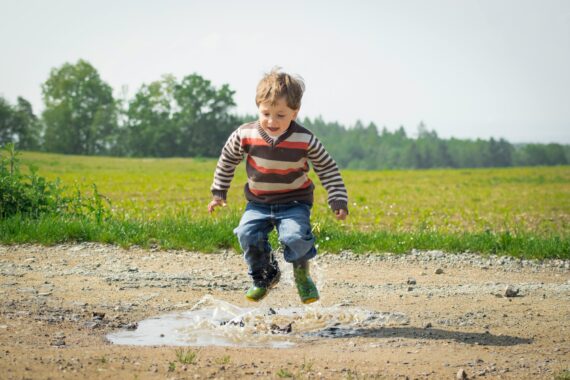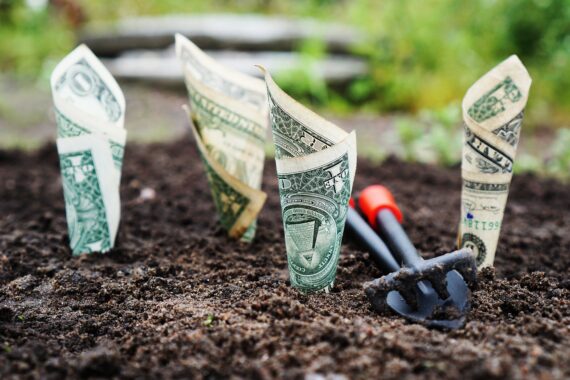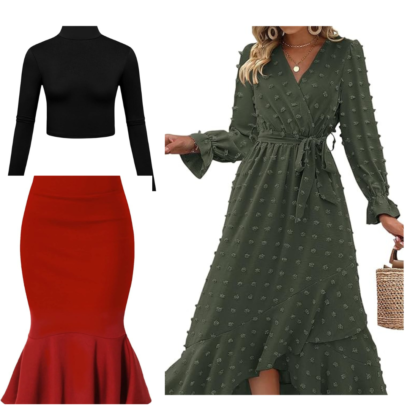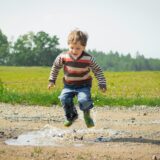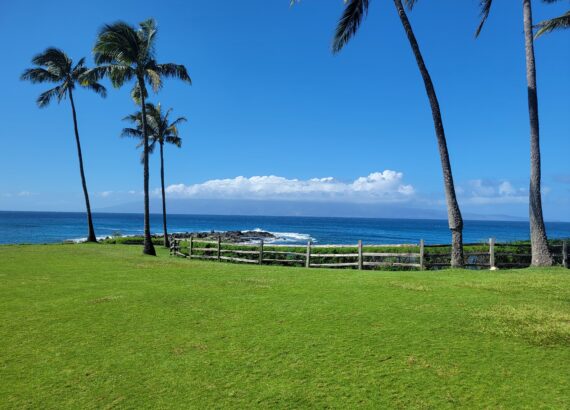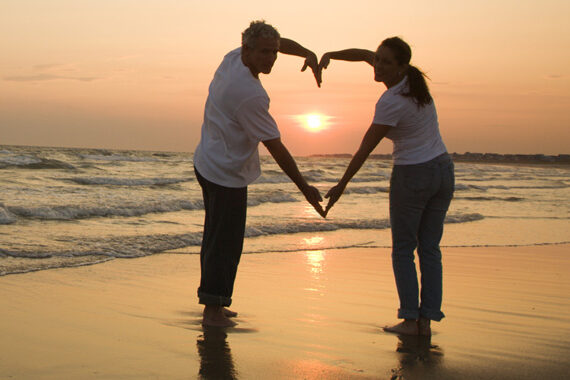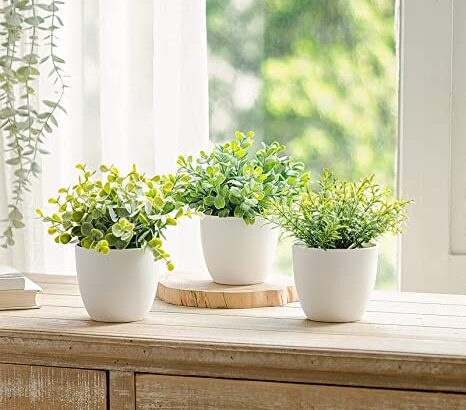This Is Your Reminder To Review Your Emergency Plan
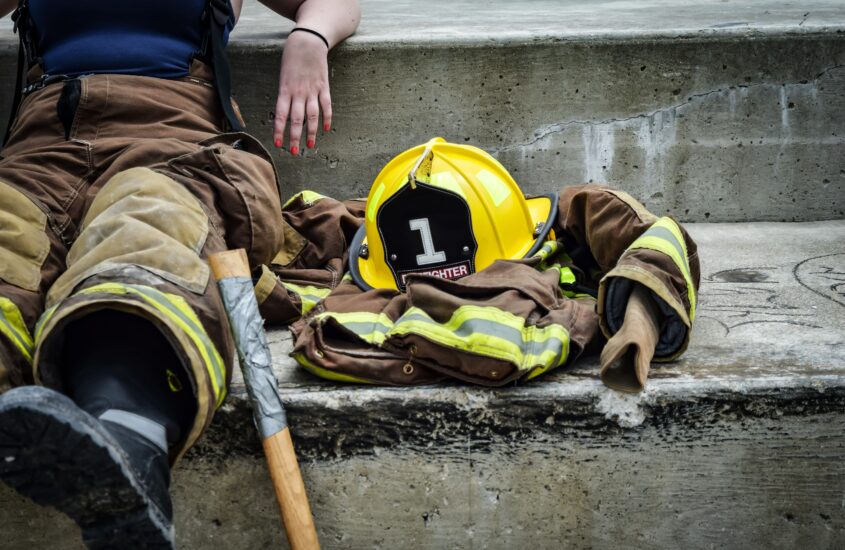
The recent devastation in Maui has made me reevaluate my own emergency preparedness. I’ve lived through two massive fires as a teenager. I still live in a place where the threat of wildfires and earthquakes are very real. As a mom to young kids, being ready for an emergency is often near the top of my mind. There are a lot of great resources out there to help you get prepared. It can be overwhelming though, so I’ve pared it down to what feels more manageable to me.
Before I get into the specifics of planning, I want to share some things I’ve implemented in my home. These are some daily habits I keep to always be ready. It may sound like I’m always stressed about it, but honestly, having these habits in place removes stress and worry from me.
- All pathways to exit points are clear. That means my kids tidy their rooms each night to ensure if there is an emergency, I have clear access to them and them to me.
- I keep a pair of shoes near my bed that I can slip on quickly.
- My phone, wallet, and keys are gathered each night and placed nearby
Other ready to go factors we have in place are:
- Go bags are in a quick and accessible location, Mine is in my room. Now that the kids are old enough for their own, they have it in their room.
- There is a flashlight on my nightstand in case of loss of power
- There is a fire extinguisher next to my bedroom
- There is a transportable escape ladder next to my bedroom.
We live in a diverse world, even our disasters vary greatly. The disasters I prepare for may be different than the ones you prepare for. Even so, a lot of what I do is good to do regardless. Just keep in mind, there may be more emergency specific items you will want to add to your plan.
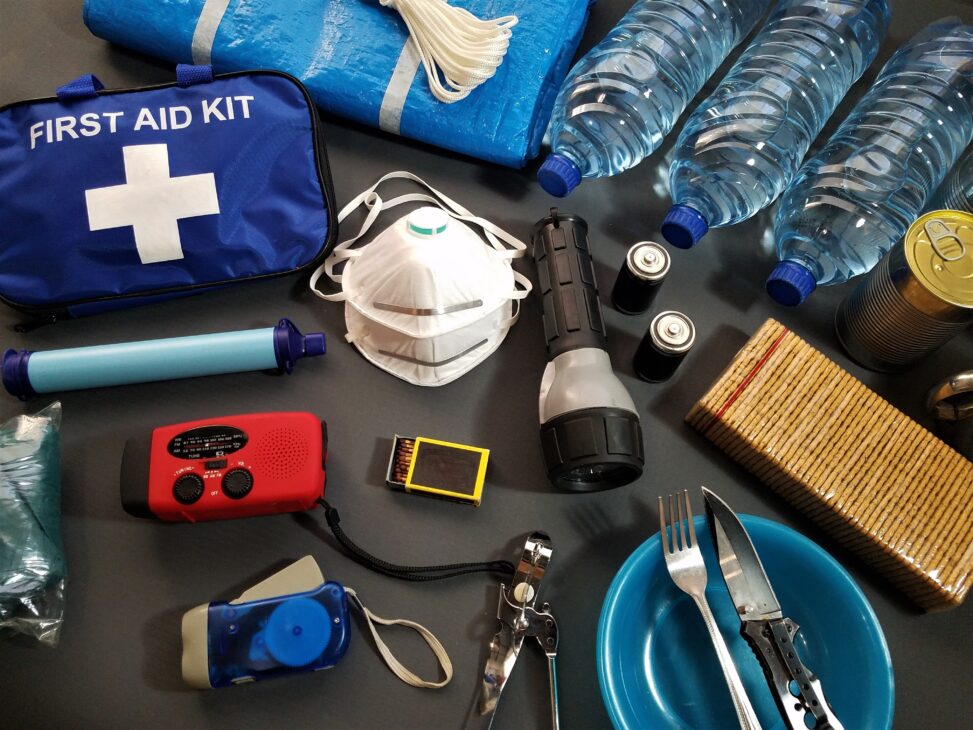
*This article contains links to products. If you choose to purchase using these links, I may receive a small commission.
Car Readiness
We aren’t always home when disaster strikes. Keeping items in your car to help you in case of emergency is always a good idea. Here is the list of items in my car’s go bag or just in my car in general.
- Tennis shoes and socks- you never know if you’ll get stranded and have to walk a long distance. Having appropriate footwear accessible is important. Especially since my usual footwear is flip flops
- Filtered drinking straw
- Water bottles
- Non perishable snacks
- Multi-tool
- Flashlight
- Blanket- emergency is easier for travel but I often have a regular blanket in my car as well
- Feminine supplies- mother nature doesn’t care about aunt flo’s visit.
- First Aid Kit– burn kit, bandaids, ice packs, etc.
- Written list of emergency contacts in case your phone dies
- N95 Mask
Home Evacuation
During the Cedar Fire and Witch Creek Fires, I had friends who evacuated their homes with the clothes on their back. That is all they had time to do, was save themselves and their pets. While I hope and pray that never happens to my family (or anyone ever again!), but the reality is it’s a possibility. I thankfully always had some time to pack and evacuate. But experience tells me that may not always be the case.
Make sure your family has an evacuation plan and that you practice it regularly. Teach your kids, when they are old enough, how to open the windows and doors. Make sure everyone in your family knows your evacuation plans and routes. Inform someone who is not in the immediate area of your plans so that someone will know where to connect with you if you become unreachable.
My mom started us young. We created a go bag. A backpack with essentials that we could grab instantly and evacuate with. Here is what we put in our Go Bag’s.
Adult/Parent
- Change of clothes and underwear
- Travel size toiletry kit
- Cash in small bills
- Credit card for emergency use only
- Copies of important documents- ID’s, Birth Certificates, Adoption Decrees, Etc. If you have time, grab the originals.
- Printed out emergency contact information including phone numbers and addresses for family members, emergency, medical, insurance, etc.
- A few days supply of medications
- First Aid Kit
- Water Bottle
- Filtered straw
- Non perishable food
- Multi-tool or pocket knife
- Flashlight and spare batteries
- Walkie Talkies
- Emergency Blanket
- N95 Mask
Child
- Change of clothes and underwear (pull ups/ diapers/ wipes)
- Travel size toiletry kit
- Water bottle
- Filtered straw
- Non perishable food
- Activity to pass the time
- Flashlight and batteries
- Comfort item
- N95 Mask
Pets
You can keep this in a separate backpack for your pets or if you have a dog and they are able to carry their own supplies, you can use something like this saddle bag.
- Food for at least 2 meals
- Collapsible bowls
- Water bottle
- Medications
- Important information
- Leash (in case you only have time to carry them out and not grab their leash)
- Poop Bags
- Toy (if room)
Make sure your fire alarms, carbon monoxide detectors, and fire extinguishers are all in working order.
If you spend a lot of time at work or other settings, be sure you have hashed out your plans in those situations as well. It is a good idea to keep extra food and water on hand in those places as well.
Sheltering In Place
Some emergencies require you to shelter in place. While you will hopefully have the comfort of home, it is likely you will not have electricity. Here are things you should definitely have in your home and handy for this type of emergency.
- Non perishable food supply for at least 3 days for each person. If you have the space, I recommend getting it for at least 1 week or longer.
- Clean water supply for at least 1 week (estimate 1 gallon per person per day)
- AM/FM radio at least or a HAM radio
- Backup Generator- be so careful with the operation as it can cause carbon monoxide poisoning when used improperly.
- First Aid Kit– the more robust the better. If you’re sheltering in place, access to medical care is likely difficult. You want to be as prepared as you can be for minor emergencies.
- Flashlights and extra batteries
- Candles
- Matches/ lighters
- A way to cook without electricity- BBQ, Firepit, etc. This way you can eat your perishable items and save your nonperishables for later.
- Water purifying tablets or drops
- Keep medications within easy access.
- Have a binder with all important emergency information. Contact information for family, friends, emergency, and medical. Also include financial information such as banking, insurance, etc. I did a blog recently about financial preparedness, check it out for more specific information regarding that topic.
I hope this gave you the motivation to review your emergency supplies and plan. We can never be too prepared for the curveballs mother nature can throw at us. The more prepared we are, the less anxious we need to feel about it.
What are some things you have done to get prepared?
Sincerely,
Amanda
Follow on Instagram for future blog posts and other content.
